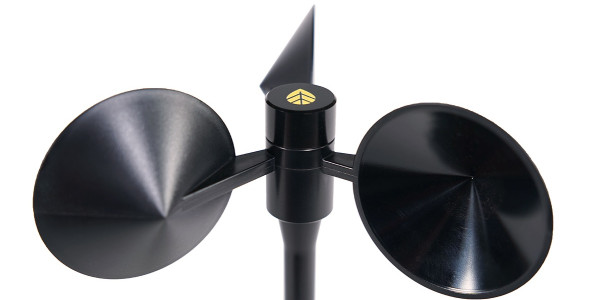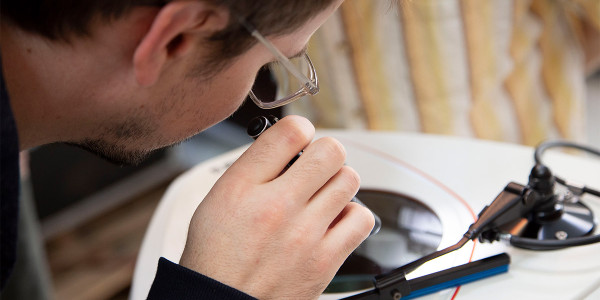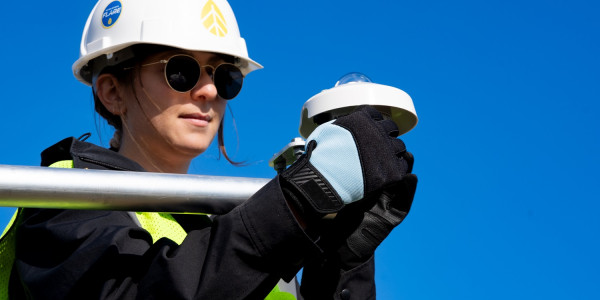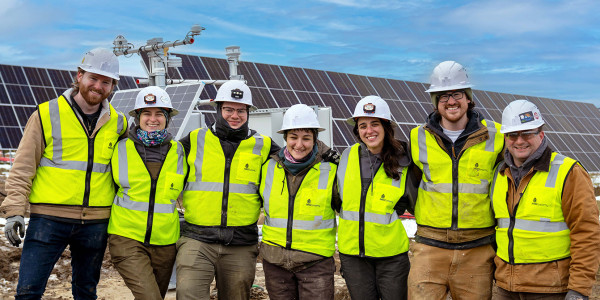May 24, 2021 | by NRG Team Voices | Engineering + Technology, Industry Events + Conferences,
Last month, NRG Data Scientist, Alexandra Arntsen, Ph.D., represented the Consortium for Advancement of Remote Sensing’s (CFARS) Site Suitability Subgroup at the organization’s 2021 General Meeting. The objective of the event is to update CFARS members – a diverse group of industry stakeholders from North America and Europe – on the consortium’s recent developments and achievements, as well as provide an opportunity to refine the organization’s 2021 roadmap.
During her presentation, Dr. Arntsen, who joined CFARS in 2019, focused specifically on the function and approach of the Site Suitability Subgroup, as well as the work the Subgroup is doing to leverage an open-source and collaborative approach to accelerating data-driven guidance for using adjusted turbulence intensity measurements from remote sensing devices.
In the Q+A below, Dr. Arntsen, delves deeper into the exciting work the Site Suitability Subgroup has accomplished this year, as well as the goals that lie ahead for the team.

NRG Systems (NRG): Can you explain the Site Suitability Subgroup’s specific focus and why it is important to the wind industry?
Alexandra Arntsen (AA): At the highest level, the Subgroup is working to pave the way for wider use of remote sensing devices for site suitability assessments for wind projects. More specifically, we are aiming to increase the overall acceptance of turbulence intensity (TI) measurements from remote sensing devices by providing an opportunity for key wind stakeholders to collaborate to advance the understanding of the accuracy and reliability of this measurement output and remove the nuance and ambiguity in best-practice methods.
NRG: What are some of the goals the Subgroup has been working to accomplish this past year?
AA: We are closing in on the overall CFARS goal of having tangible industry impact by 2021. We have completed our first of two white papers which primarily presents a benchmarking and evaluation of differences in TI measurements as observed in participants’ project data and, additionally, proposes a best practice framework for how the Subgroup’s efforts and research can inform commercial site suitability decision-making derived from adjusted project TI data. With this work, we are setting up a follow-up white paper that will present a more technical analysis of the adjustments themselves and the quantitative impact on loads analysis. The goal is that stakeholders can refer to the Subgroup’s framework and results to evaluate data from their own individual projects and make informed decisions more confidently.
Central to this framework is the open-source python tool TACT, which stands for the Turbulence Intensity Adjustment Comparison Tool, that the Subgroup and stakeholders are using to process project data. We are currently working on making that a bit more user-friendly by upgrading it from a research tool to something that all stakeholders would be able to benefit from readily.
NRG: what were some of the main takeaways that resulted from this work?
AA: Our industry is eager to continue to deploy more remote sensing devices to extract as much valuable observational data as possible. The value of a higher quantity of nuanced observations is something intuitively easy to comprehend, we just need to make sure our commercial adoption and utilization of this data is not too far behind the technical development and innovation. It is great to see collaboration to clear current hurdles related to increasing our collective understanding of how to evaluate TI from remote sensing devices. The Subgroup found that our ability to make progress and contribute to the goals of CFARS was a direct result of adopting an open-source approach to investigation and demonstration of methods.
Contributors, such as project owners and turbine OEMs, mostly possess data that they are unable share for a common research initiative, so this approach allows for a closed-data, open-methods initiative where project data can be kept internally confidential to a participating member that runs the TACT tool locally and only shares the results with the CFARS subgroup. Furthermore, it was clear from the start that collaboration automatically created a better product for this type of project.
NRG: Can you tell us more about the TACT tool?
AA: The core competency of TACT is to perform a series of commonly used data adjustment techniques on remote sensing turbulence intensity data, and then to quantify TI measurement bias between a reference measurement and an alternative representation of turbulence intensity (in this case a raw and adjusted TI from a remote sensing device). We compare these measurements with regression analysis of 10-minute data, but also by comparing statistics of binned turbulence intensity between the two measurements – a useful analysis for understanding the impact of fatigue loads models. We are also investigating the sensitivity of these comparison results to environmental conditions and to adjustment model generation schemes. This can help discern if the length of model generation time makes a difference (e.g., if I collocate my remote sensing device with a tower for 3 weeks vs. 7 weeks). We can also determine how transferrable a model generated at one site or from multiple sites is to a new site.
NRG: How did the Subgroup’s collaborative approach inform the tool’s development?
AA: Working directly with the end users and stakeholders allowed us to achieve consensus on comparison metrics for how we evaluate and present measurement bias and helped us identify which adjustment methods to test. Our participating members shared adjustment techniques that they were familiar with or even that they were interested in testing more broadly in a research setting. From there, we arrived at approximately a dozen different adjustment method variations that span a range of complexities from slope and offset adjustments to machine learning methods to raw 1 hz physical and spectral based corrections. Some of the adjustment methods are aimed specifically at interacting with a collocated tower, and some are aimed at adjusting standalone lidar data. Our members and contributors astutely recognized the importance of observing the sensitivity of measured bias between turbulence intensity measurements to metrics indicative of stability, or at least indicative of varied types of flow, so we made sure that TACT reports performance as a function of a pseudo stability proxy, in this case turbulence kinetic energy (TKE). Not only is this a useful trend to observe, but we can use this conclusion to strengthen the adjustment methods themselves by making them “TKE aware.”
Ultimately, our collaborative approach has allowed us to be responsive to what stakeholders and participants need as output from this tool and TACT has become an important piece of what our group has presented as a best practice framework for commercial implementation.
NRG: Can you talk more about this best practice framework?
AA: Based on our work this past year, we propose that the deliverables of the Site Suitability Subgroup as powered by TACT can be used effectively in commercial discussions aimed at evaluating remote sensing device turbulence intensity adjustments. According to our recommendation, an owner and/or turbine OEM could run TACT for a given project and use both the published reference analysis of our group along with the tool output to understand downstream impacts of using a particular adjustment method on loads model output. With the results TACT provides, a Turbine OEM can also run a loads model specific to their turbine and make an informed decision on the stakeholders’ collective comfort in accepting a particular method. In this framework, we recognize the importance of independent engineers and turbine OEMs coming to an agreement on acceptable load bias thresholds from adjusted remote sensing device turbulence intensity.
NRG: What are the next steps for the Subgroup? What are you looking forward to accomplishing in the coming year?
AA: We are now focused on collecting, aggregating, and analyzing our most recent results from TACT for our second white paper. We are looking for some more help in this analysis of results, so please reach out to get involved!
Interested in learning more about TACT and the exciting work the CFARS Site Suitability Subgroup is doing? Contact Dr. Arntsen at aea@nrgsystems.com for more information.







